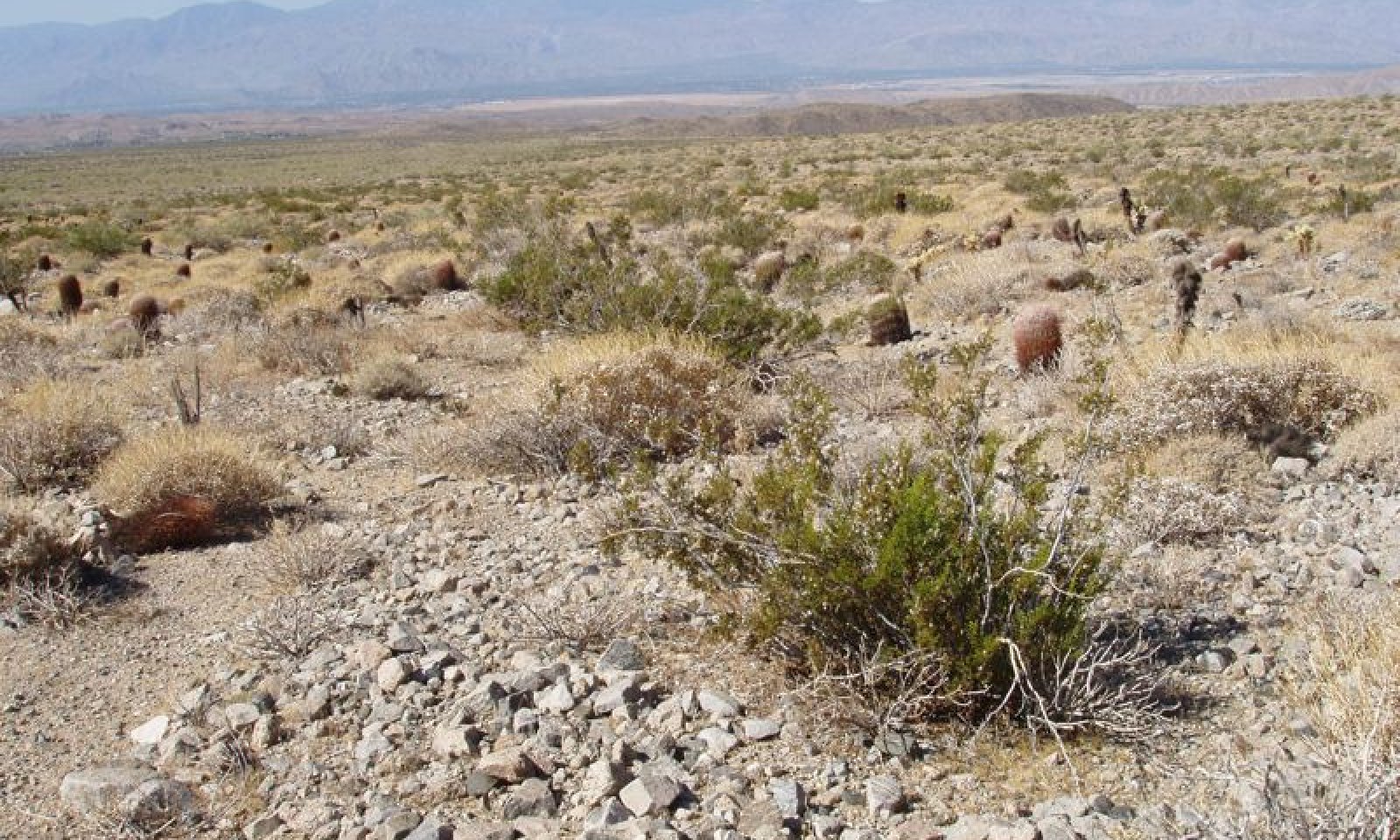
Coarse Gravelly Fans
Scenario model
Current ecosystem state
Select a state
Management practices/drivers
Select a transition or restoration pathway
- Transition 1 More details
- Transition 2 More details
- Restoration pathway 1 More details
-
No transition or restoration pathway between the selected states has been described
Target ecosystem state
Select a state
Description
State 1 represents the historic range of variability for this ecological site. This state no longer exists due to the ubiquitous naturalization of non-native species in the Mojave and Colorado Deserts. Periodic drought and rare fire were the natural disturbances influencing this ecological site. Fire would have been a very rare occurrence due to the lack of a continuous fine fuel layer between shrubs.
Data for this State does not exist, but dynamics and composition would have been similar to State 2, except with only native species present. See State 2 narrative for more detailed information.
Description
State 2 represents the current range of variability for this site. Non-native annuals, including Mediterranean grass and Asian mustard, are naturalized in this plant community. Their abundance varies with precipitation, but they are at least sparsely present (as current year’s growth or present in the soil seedbank).
Submodel
Description
This state develops when the fire return interval is less than 50 years. This state has been significantly altered from the natural range of variability found in States 1 and 2. Creosote bush is lost, and brittlebush, non-native and native annual grasses and forbs dominate the community.
Submodel
Mechanism
This transition occurred with the naturalization of non-native species in this ecological site. Non-native species were introduced with settlement of the Southwest Desert region in the 1860s. Post-settlement cattle and sheep grazing, as well as dryland farming, helped to spread and facilitate their establishment (Brooks and Pyke 2000, Brooks et al. 2007).
Mechanism
This transition occurs when the fire return interval is less than 50 years.
Mechanism
Restoration of communities severely altered by repeat fire at the landscape scale is difficult. Methods may include aerial seeding of early native colonizers such as desert globemallow, burrobrush, threeawns (Aristida spp.), and desert marigold. Increased native cover may help to reduce non-native plant invasion, helps to stabilize soils, provides a source of food and cover for wildlife, including desert tortoise (Gopherus agassizii), and provides microsites that facilitate creosote bush establishment. However, the amount of seed required for success is often prohibitive. In this ecological site, brittlebush naturally colonizes rapidly, and large-scale planting of creosote bush and other secondary species would be required to restore this site to the reference state. Creosote bush can be successfully propagated and outplanted, especially if outplants receive supplemental water.
Model keys
Briefcase
Add ecological sites and Major Land Resource Areas to your briefcase by clicking on the briefcase (![]() ) icon wherever it occurs. Drag and drop items to reorder. Cookies are used to store briefcase items between browsing sessions. Because of this, the number of items that can be added to your briefcase is limited, and briefcase items added on one device and browser cannot be accessed from another device or browser. Users who do not wish to place cookies on their devices should not use the briefcase tool. Briefcase cookies serve no other purpose than described here and are deleted whenever browsing history is cleared.
) icon wherever it occurs. Drag and drop items to reorder. Cookies are used to store briefcase items between browsing sessions. Because of this, the number of items that can be added to your briefcase is limited, and briefcase items added on one device and browser cannot be accessed from another device or browser. Users who do not wish to place cookies on their devices should not use the briefcase tool. Briefcase cookies serve no other purpose than described here and are deleted whenever browsing history is cleared.
Ecological sites
Major Land Resource Areas
The Ecosystem Dynamics Interpretive Tool is an information system framework developed by the USDA-ARS Jornada Experimental Range, USDA Natural Resources Conservation Service, and New Mexico State University.
